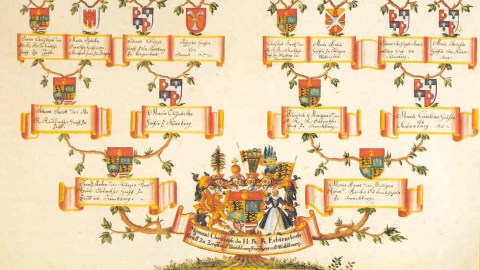Brain Science’s “Family Tree”

Ideas grow out of experience, in science as elsewhere. Pascal’s gambling focussed his attention on probability, for example, and French brewers gave Pasteur a reason to study fermentation. That’s why I’m fascinated by Neurotree, a volunteer-run website for brain and behavior researchers that tracks their “academic genealogy.” Neurotree shows, for some 30,000 scientists, the biographical roots of ideas. It maps who trained whom—which mentors brought forth which proteges, who in turn mentored others.
If you know about a scientist’s interests and achievements, Neurotree is as compelling as a family album, and sometimes as surprising. (Who knew that some very molecularly-oriented brain scientists have Anna Freud among their intellectual great-grandparents?) I think it might also become a useful tool for journalists who want to avoid giving the common (and false) impression that ideas just float around the universe like loose atoms, until they fall into the mind of a researcher for no particular reason.
For example, the other day The Scientist published this article of mine on behavioral epigenetics (the search, at the molecular level, for the ways that experience changes the brain). If I’d known about Neurotree when I was writing it, I could have known that one of the researchers quoted, Michael J. Meaney of McGill University, numbers among his intellectual ancestors Donald Hebb and Wilder Penfield, and that he is three degrees of separation from Eric Kandel, making Kandel (who won the Nobel Prize in Medicine in 2000) Meaney’s “closest Nobelist.”
The site also lets you check for connections laterally, between members of the same intellectual generation. That showed Meaney to be two or three degrees of separation from others in the behavioral epigenetics field—a pretty good representation of the way people in this area share some common ground, but have plenty of intellectual differences.
On the other hand, consider Ed Vul, author of a famous 2009 paper criticizing the methodology of a number of prominent experiments in the field of social neuroscience. According to Neurotree, he is six degrees of separation from Matthew Lieberman of UCLA, also six degrees of separation from David Sander of the Swiss Centre for Affective Sciences, and completely unconnected to Tania Singer of the University of Zurich. Those people wrote the papers were the most prominently criticized in Vul’s published attack. Perhaps that means that it’s easier to see flaws in someone’s methodology when you have not shared the same formative experiences and intellectual haunts.
It could, of course, also be a statistical fluke. Nonetheless, I’ve bookmarked Neurotree, because for most scientists I’ve met, training—by particular teachers, in a particular place—was an emotionally intense and life-shaping experience, which did much to define the ideas they have today. So intellectual lineages, as teachings are transmitted and changed and retransmitted across generations, are almost as important in science as they are in Tibetan Buddhism. Neurotree shows a biographical aspect of ideas that we science writers seldom get to portray.




